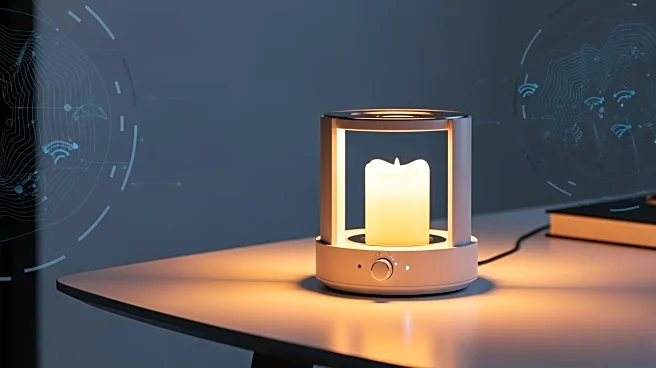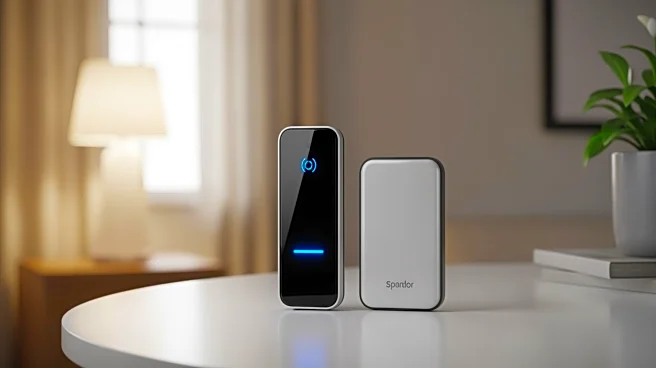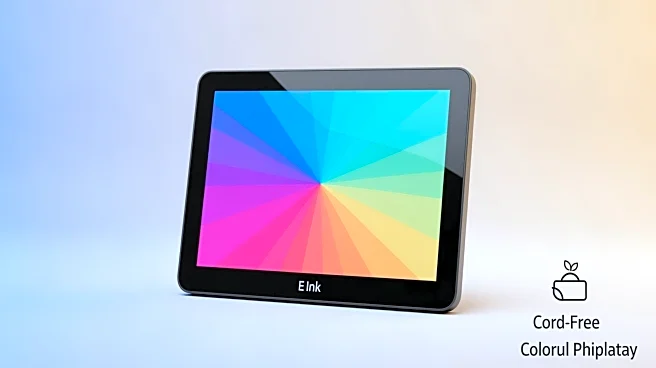What's Happening?
SwitchBot, a Chinese company known for its innovative gadgets, has launched a new product called the Candle Warmer Lamp. This smart device is designed to warm candles to release their scent without the need
for a burning wick. The lamp is internet-connected and Matter-enabled, allowing it to integrate seamlessly with major smart home platforms like Google Home and Alexa. Users can control the scent and lighting levels through an app, making it a convenient addition to modern homes. The lamp supports various candle sizes and offers adjustable brightness, catering to different mood settings.
Why It's Important?
The introduction of the SwitchBot Candle Warmer Lamp reflects the growing trend of integrating smart technology into everyday household items. This innovation aligns with the cottagecore lifestyle, which emphasizes simplicity and a connection to nature. By offering a tech-savvy solution to traditional candle usage, SwitchBot is tapping into a market that values both aesthetic appeal and modern convenience. The product's compatibility with major smart home systems also highlights the increasing demand for interconnected devices that enhance home living experiences.
What's Next?
As smart home technology continues to evolve, we can expect more traditional household items to be reimagined with internet connectivity and app-based controls. SwitchBot's Candle Warmer Lamp may inspire other companies to explore similar innovations, potentially leading to a wider range of smart home products that cater to niche lifestyle trends like cottagecore. Consumer response to this product could influence future developments in the smart home industry, particularly in the realm of home decor and ambiance.
Beyond the Headlines
The ethical implications of smart technology in everyday items raise questions about privacy and data security. As more devices become internet-connected, consumers must consider the potential risks associated with data collection and usage. Additionally, the environmental impact of producing smart gadgets, including resource consumption and electronic waste, is an important factor to consider in the broader context of sustainable living.











